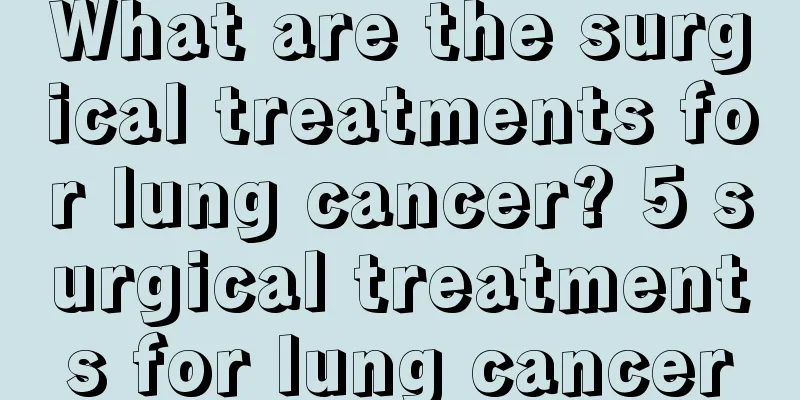What are the surgical treatments for lung cancer? 5 surgical treatments for lung cancer

|
For many malignant tumors, patients will choose surgical treatment to remove most of the cancer cells. This is also true for lung cancer patients. Because the lungs are invaded by cancer cells, only by choosing the appropriate treatment method can the health of the body be guaranteed. ① For peripheral lung cancer (including small cell lung cancer that was not diagnosed before surgery), surgery is performed first, and chemotherapy or radiotherapy is given later according to the results of pathological examination. ② For lung cancer with metastasis to local lymph nodes but no clear distant metastasis, preoperative chemotherapy or radiotherapy is given to strive for smooth surgery and maximum retention of healthy lung tissue, and then appropriate chemotherapy or radiotherapy is given. ③ For lung cancer with no distant metastasis but estimated to be difficult for radical surgery, preoperative chemotherapy or radiotherapy is given to strive for smooth radical surgery or intraoperative radiotherapy, and chemotherapy or radiotherapy is given after surgery according to the results of pathological examination. ④ For those who cannot undergo surgical treatment in the later stage, radiotherapy is usually performed first and then chemotherapy, or chemotherapy and radiotherapy are performed at the same time to play a synergistic role, but chemotherapy and radiotherapy have greater side effects at the same time, and Chinese medicine should be used at the same time to reduce toxic side effects and improve efficacy, and immunotherapy can be appropriately added to promote recovery. ⑤ Combine biological therapy with other treatments. Biological therapy is a relatively new therapy that has emerged in the past 10 years. For example, colony stimulating factor can appropriately increase the chemotherapy dose to improve the efficacy. Daily intrapleural injection of small doses of interleukin-2 is conducive to the conversion of cancer cells in postoperative cancerous pleural effusion to negative. For many patients with early lung cancer, the success rate of surgical removal of cancer cells is very high, but as the disease continues to worsen until the late stage of lung cancer, the success rate is also decreasing with the further expansion of cancer cells. Therefore, it is still hoped that patients can be treated in the early stages of the disease. |
<<: What are the early symptoms of lung cancer? 4 early symptoms of lung cancer
>>: What is the most common cause of lung cancer? Five high-risk factors for lung cancer
Recommend
Questions and answers about prostate cancer
Prostate Cancer FAQ 1. What is prostate cancer? 9...
Can stomach cancer be transmitted to children?
Gastric cancer is a common malignant tumor in the...
The harm of secondhand smoke to children
Secondhand smoke can cause great harm to adults&#...
Can rectal cancer undergo minimally invasive surgery?
Usually, laparoscopic surgery involves operating ...
Effects of tea polyphenols in tea
Tea ceremony is one of the traditional Chinese cu...
What should patients with prostate cancer eat?
Prostate cancer is a very troubling disease for m...
What causes lower back pain, lower abdominal pain and excessive vaginal discharge?
Leucorrhea is a very important basis for female f...
What are the traditional Chinese medicine treatments for recurrent nasopharyngeal carcinoma and what can patients eat more of them
What are the TCM treatments for recurrent nasopha...
What should I do if a mosquito bite leaves a red mark?
The summer when mosquitoes are rampant is very sa...
What is the use of disposable masks
Disposable masks have very good ventilation perfo...
How to prevent bedwetting
Bedwetting among newborns is a common occurrence,...
What are the small bubbles on my face?
The skin on the face is exposed on the surface. T...
How long does it take to recover from minimally invasive surgery for liver cancer
How long does it take to recover from minimally i...
Is nasopharyngeal cancer contagious? What should I do?
For the treatment of nasopharyngeal cancer, measu...
What is the incidence of nasopharyngeal carcinoma and how to treat it
How common is nasopharyngeal cancer? How is it tr...









